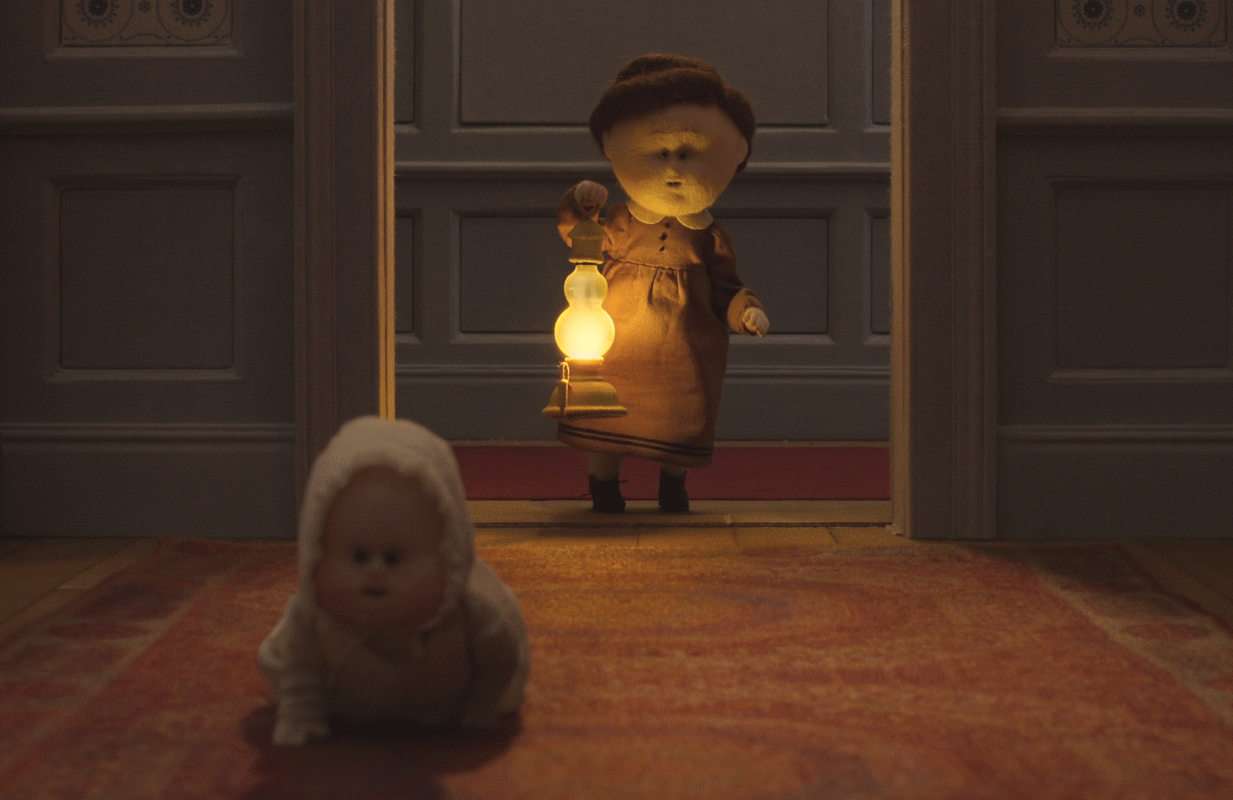The House Is a Creepy Little Animated Anthology from Netflix
-
 An image from chapter 3 of The House. (Netflix)
An image from chapter 3 of The House. (Netflix)There is something about stop-motion animation, with its tactile fibers and surreal movement, that is both fascinating and alienating. If the dominant trend in animation over the last few decades has strived to be more and more lifelike, the stop-motion outliers — like Wes Anderson's Fantastic Mr. Fox and Isle of Dogs, or Henry Selick's Coraline — have pushed in the opposite direction. Stop motion doesn't have to be creepy, but it does lend itself to stories of the uncanny, and that's where the new Netflix animated anthology The House comes in.
Produced by London-based Nexus Studios, The House tells an episodic three-part story about the residents of one particular house. The stories are not connected except for setting, and practically speaking they don't seem like they could exist in the same reality as each other, seeing as the first part sees the house inhabited by people, the second by anthropomorphic rats, and the third by cats. There are themes that cut across all three, mostly about when and how to relinquish control of this house that seems to mean so much to these characters. And because there's a significant element of the surreal in each one — that'll happen when your main characters are rats and cats — you tend to look to the metaphorical, and there do seem to be places where you could read allegories for Brexit and climate change into these stories. But mostly it's about a house. One big, unwieldy, frequently changing house.

The first part is the most overtly horror-inflected of the three, almost taking the form of a Grimm's fairy tale. A 19th century family is struggling financially when they receive a too-good-to-be-true offer on their country home by a mysterious benefactor who appears in the middle of the woods as if from nowhere. We all know this is probably a bad idea because real altruism doesn't appear as if by magic. But the patriarch (voiced by Downton Abbey's Matthew Goode) agrees to move his family into a new home where all will be provided for them … until the conditions set out for them become increasingly terrifying. Mia Goth (of the recent remakes of Suspiria and Emma) voices the family's daughter, who sees through the new house's machinations, even if her parents can't.
Part two is less horrific but still stressful, with a rat property developer (voiced by Jarvis Cocker) living in the home and trying to sell it. Again, the inhabitant of the house is struggling with financials — another throughline of all three segments seems to be that no one can afford this giant home anymore — but his plans to flip the house hit a snag when would-be buyers show up to an open house and never leave.

The third part is set in an uncertain future, where rising waters have come to meet the titular house, now a boarding home run by Rosa, an overmatched but plucky cat, whose sisyphean struggles to hang wallpaper and nail down loose floorboards are matched only by her difficulty in extracting rent payments out of her wayward and bohemian tenants (one of whom is voiced by Helena Bonham Carter in a tremendously fun performance). Rosa desperately wants to return the house to its former greatness, but it may be too late, and a late-arriving interloper who initially seems to be yet another freeloader tries to open her eyes to the reality of a changed and possibly ruined landscape.
If this all sounds a bit heavy, it … kind of is. This definitely isn't an animated series to sit your kids down in front of for 90 minutes. But it is compelling and often thought provoking, and the animation itself is dazzling in how it evokes moods. The first segment is directed by Emma De Swaef and Marc James Roels, whose 2018 animated short This Magnificent Cake played in competition at Cannes and won the Toronto International Film Festival prize for best short. The second comes from Swedish filmmaker Niki Lindroth von Bahr, whose short The Burden also played Cannes and won at TIFF a year ealier. The third is directed by Paloma Baeza, who won a BAFTA for her 2017 short Poles Apart.
There's a remarkable cohesion across all three parts, even as they take different stabs at the aesthetic of the House and what transpires therein. The series is by turns spooky, stressful, sweet, and sad, and it bodes well for Netflix branching out and expanding its animation horizons to ever more creative places. They too can be a house with many tenants.
The House premieres Friday January 14 on Netflix.
People are talking about The House in our forums. Join the conversation.
Joe Reid is the senior writer at Primetimer and co-host of the This Had Oscar Buzz podcast. His work has appeared in Decider, NPR, HuffPost, The Atlantic, Slate, Polygon, Vanity Fair, Vulture, The A.V. Club and more.
TOPICS: The House, Netflix, Helena Bonham Carter, Matthew Goode, Mia Goth